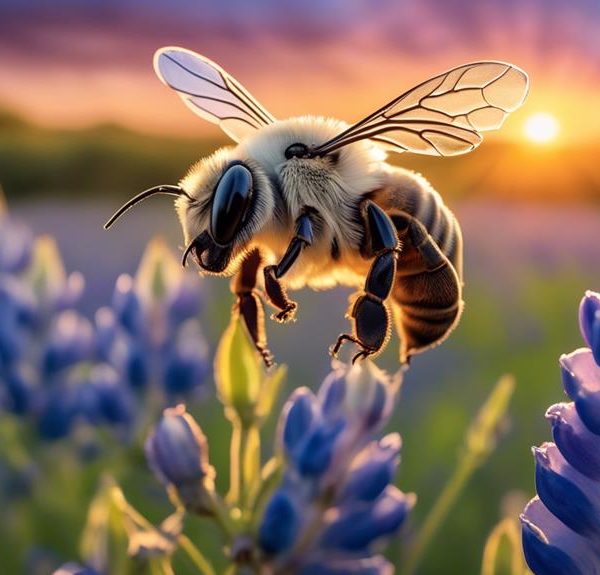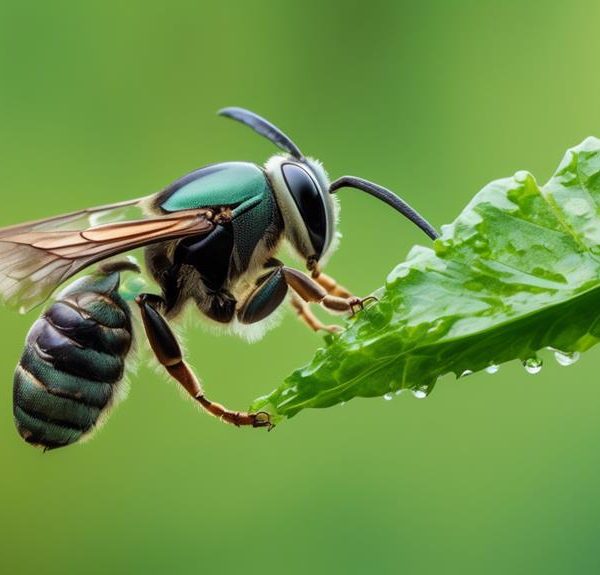The Alfalfa Leafcutter Bee, or Megachile rotundata, is an eco-crucial pollinator with a unique role in our food system – discover more here.
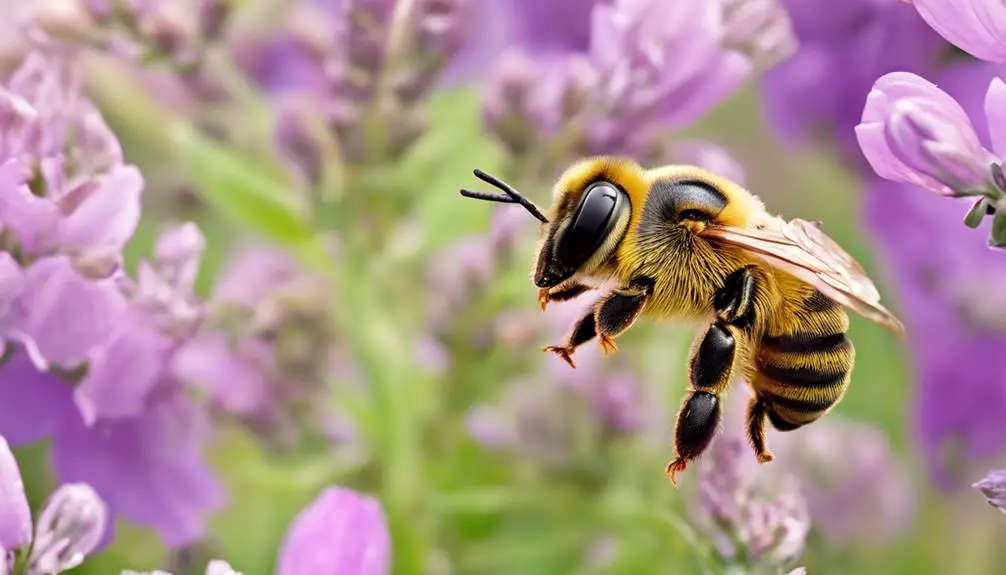
Alfalfa Leafcutter Bee Scientific Name
Did you know that the Alfalfa Leafcutter Bee, or Megachile rotundata, is responsible for pollinating about one-third of all the food we eat? That's right, you've got this little creature to thank for a hefty chunk of your diet.
Not just a common honeybee, the Alfalfa Leafcutter Bee is a fascinating species with a unique role in our ecosystem and agriculture. Its peculiar name, Megachile rotundata, might sound like a mouthful, but it hints at a world of scientific classification and biological insight.
Interested in finding out more? Well, you're about to embark on a journey into the intriguing world of this industrious pollinator.
Key Takeaways
- The scientific name of the Alfalfa Leafcutter Bee is Megachile Rotundata.
- It is a solitary bee with unique nesting habits.
- It is a key contributor to agriculture, particularly in the cultivation of alfalfa.
- The Megachile Rotundata enhances the quality and yield of alfalfa crops through efficient pollination services.
Understanding Megachile Rotundata Classification

Delving deeper into the classification of Megachile Rotundata, also known as the Alfalfa Leafcutter Bee, you'll find it's a fascinating journey through the intricate world of insect taxonomy. This species belongs to the Megachilidae family, a group known for their solitary nature and unique nesting habits.
Within this family, they're part of the Megachile genus, a clan renowned for their leaf-cutting behaviour. This bee's specific name, Rotundata, refers to its round body shape. So, when you're looking at an Alfalfa Leafcutter Bee, you're observing a creature that fits neatly into a complex taxonomic hierarchy, a result of centuries of scientific study.
But it's not just about names and categories. Understanding this classification gives you insight into the bee's biology and behaviour. It tells you that it's a solitary bee, one that cuts leaves, and comes with a strikingly round body.
It's a bit like a puzzle, isn't it? Each piece of its name, each layer of its classification, adds up to create the full picture of what Megachile Rotundata is. This is the beauty of taxonomy, its precision and its capacity to inform.
Habitat and Distribution of Alfalfa Leafcutter Bee

While you're appreciating the distinct characteristics of the Alfalfa Leafcutter Bee, it's also important to examine their habitat and distribution patterns to gain a comprehensive understanding of this unique creature.
Alfalfa Leafcutter Bees, scientifically known as Megachile rotundata, originally hail from Europe. However, they've been successfully introduced to various continents like North America, Asia, and Australia due to their exceptional pollination abilities.
These bees prefer habitats with abundant flowering plants, especially alfalfa fields, orchards, and gardens. They've adapted to a wide range of environmental conditions but thrive in regions with warm summers and cold winters.
Here's a quick overview of their habitat and distribution:
Continent | Typical Habitat |
|---|---|
Europe | Natural, widespread |
North America | Introduced, common in alfalfa fields |
Asia & Australia | Introduced, found in gardens and orchards |
The Lifecycle of Megachile Rotundata
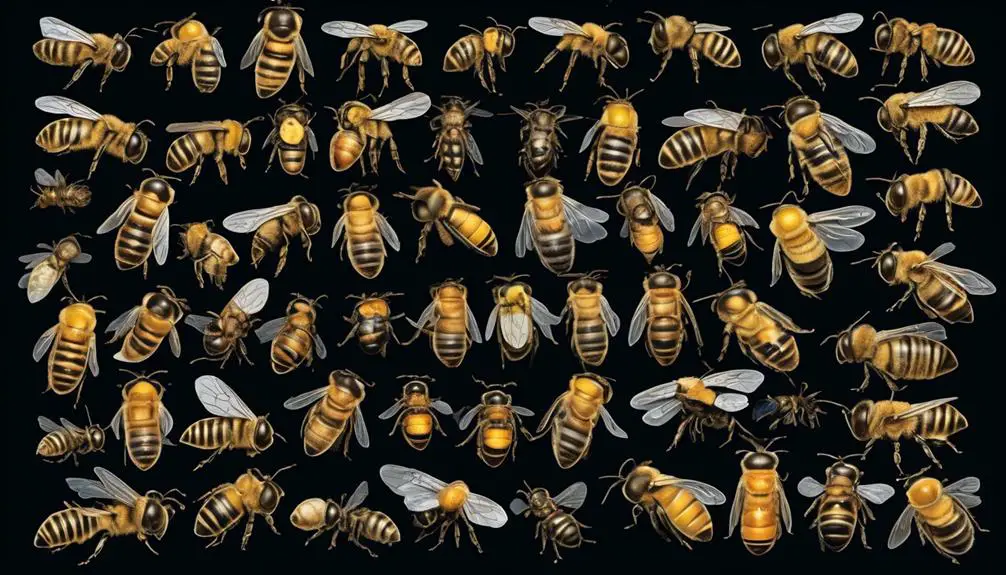
Let's journey through the fascinating lifecycle of Megachile Rotundata, a process that's as intricate and meticulously planned as the best of nature's designs.
This journey begins when a female leafcutter bee lays her eggs in a nest cell she's created, typically in pre-existing holes or cavities. She carefully provisions each cell with a mixture of pollen and nectar, providing the necessary food for her offspring.
Upon hatching, the larvae consume the food supply, growing rapidly. They then spin a cocoon around themselves and enter a pupal stage, where transformation into adult bees occurs. Interestingly, the bees' development rate is temperature-dependent. Optimal development occurs between 29 to 32 degrees Celsius.
In colder climates, the adult bees remain in their cocoons throughout winter, emerging only when temperatures rise in spring. This hibernation-like phase, known as diapause, can last up to 11 months.
The cycle repeats when the adult females mate and begin constructing their own nests, ensuring the continuity of the species.
This lifecycle, though seemingly simple, reflects the complexity of adaptation and survival strategies in nature – a testament to the beauty and resilience of the Megachile Rotundata.
Alfalfa Leafcutter Bee's Role in Agriculture
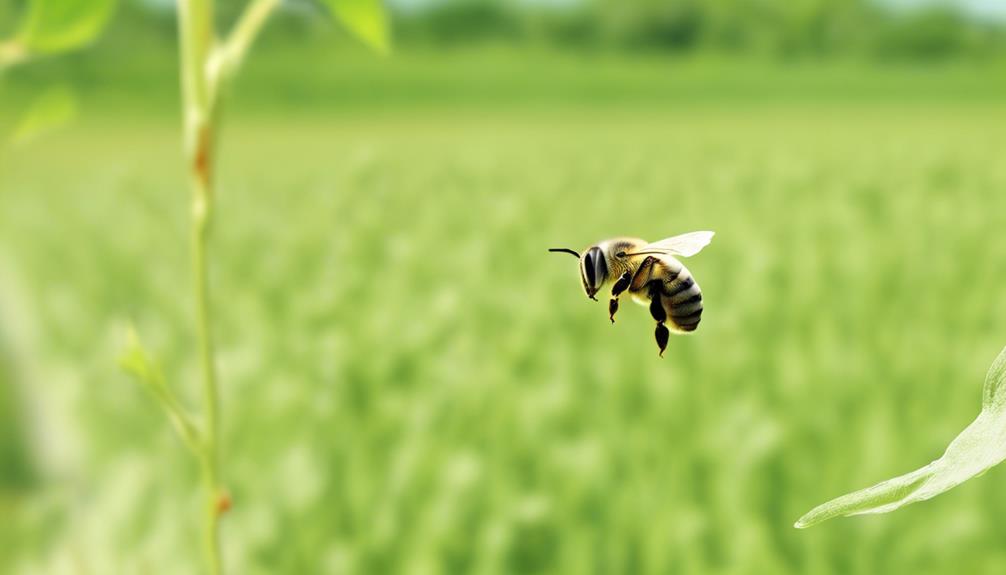
Building on the inherent resilience and adaptability of the Megachile Rotundata, you'll find these bees are not just survivors but also key contributors to agriculture, especially in the cultivation of alfalfa. Their primary function is pollination, a critical process that enables plant reproduction. Alfalfa leafcutter bees, unlike honeybees, are solitary bees, making them more efficient pollinators of alfalfa.
Their role extends to enhancing the quality and yield of alfalfa crops. They achieve this by carrying pollen directly from the male parts of a flower to the female parts, allowing fertilization and subsequent seed production to occur.
Here's a summary of their role:
Role | Impact |
|---|---|
Pollination | Ensures plant reproduction |
Increased alfalfa yield | Boosts agricultural productivity |
Improved crop quality | Enhances livestock feed |
These bees also have a direct impact on the livestock industry. As alfalfa is a primary component of livestock feed, the increased yield and quality directly translate to healthier, more productive animals. You see, the alfalfa leafcutter bee, or Megachile Rotundata if we're being scientific, isn't just a survivor. It's a key catalyst in the cycle of life, shaping agricultural landscapes as we know them.
Conservation Status and Threats
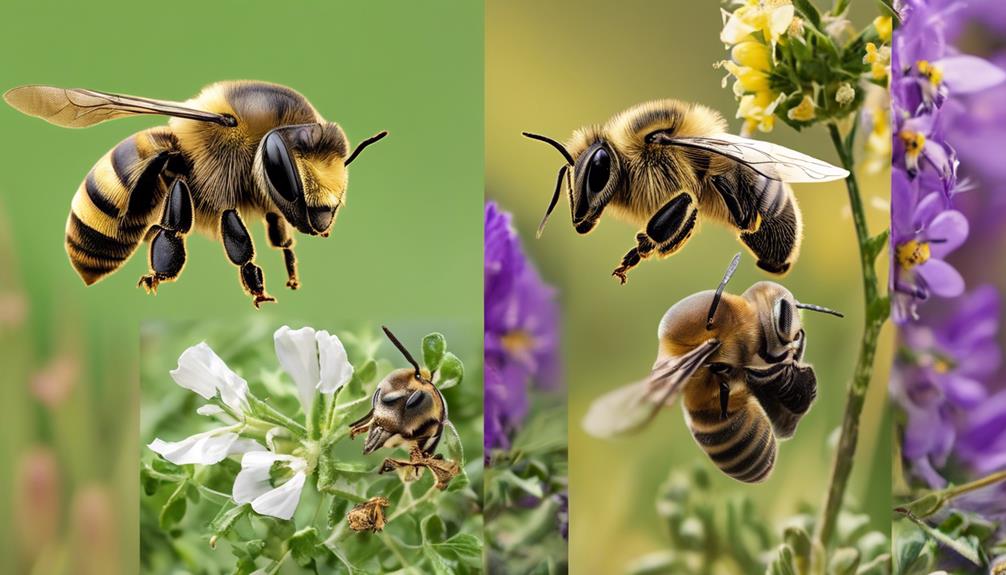
Despite their crucial role in agriculture, the Alfalfa leafcutter bee faces a range of threats that are potentially endangering its existence. Pesticide exposure is a primary concern. These chemicals, often used to protect crops, can inadvertently harm the bees. You'll find that sub-lethal exposure can result in impaired foraging and navigation, lowered reproductive success, and increased susceptibility to disease.
Habitat loss is another significant threat. With the increasing conversion of natural landscapes into agricultural land or urban development, the bees' nesting and foraging sites are being reduced. This poses an alarming threat to their survival, making conservation efforts crucial.
The spread of diseases and parasites further jeopardize the Alfalfa leafcutter bee populations. Fungal pathogens like chalkbrood, and parasites such as the Varroa mite, can severely impact bee colonies. Climate change, too, plays a role. It's worth noting that changes in weather patterns can disrupt the synchrony between bee emergence and the blooming of their food plants.
It's essential to understand these threats, as your intervention can make a difference in protecting these vital pollinators. Conservation strategies can be implemented, such as creating pesticide-free zones, preserving wild habitats, and promoting disease management, to ensure the Alfalfa leafcutter bee's survival.
Conclusion
In understanding the Megachile rotundata, you've delved into its classification, habitat, lifecycle, and role in agriculture.
You've seen how crucial this alfalfa leafcutter bee is to our food system. Yet, it's under threat, needing our urgent attention for conservation.
As we move forward, let's not forget the small but mighty role these bees play. Their survival is intrinsically linked to ours.
So, let's strive to protect them, ensuring a thriving and sustainable future for all.

